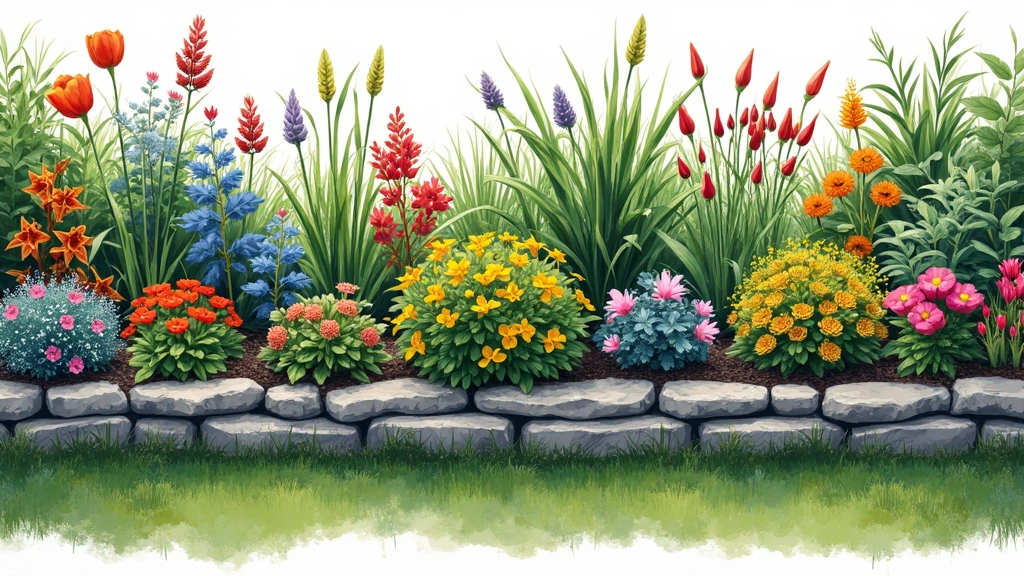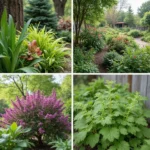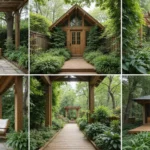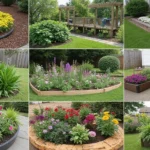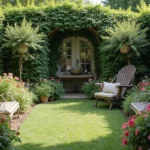Transforming your outdoor space can start with something as simple as a garden border. A well-designed border not only defines the edges of your garden but also enhances its beauty by adding structure and style.
From lush vertical gardens to rustic stone edgings, these creative garden border ideas will inspire you to elevate your landscaping game. Whether you’re looking to create vibrant flower beds or a serene vegetable patch, there’s an idea here for every garden enthusiast. Let’s dive into these garden border ideas that will take your yard from drab to fab!
1. Vertical Wooden Slats
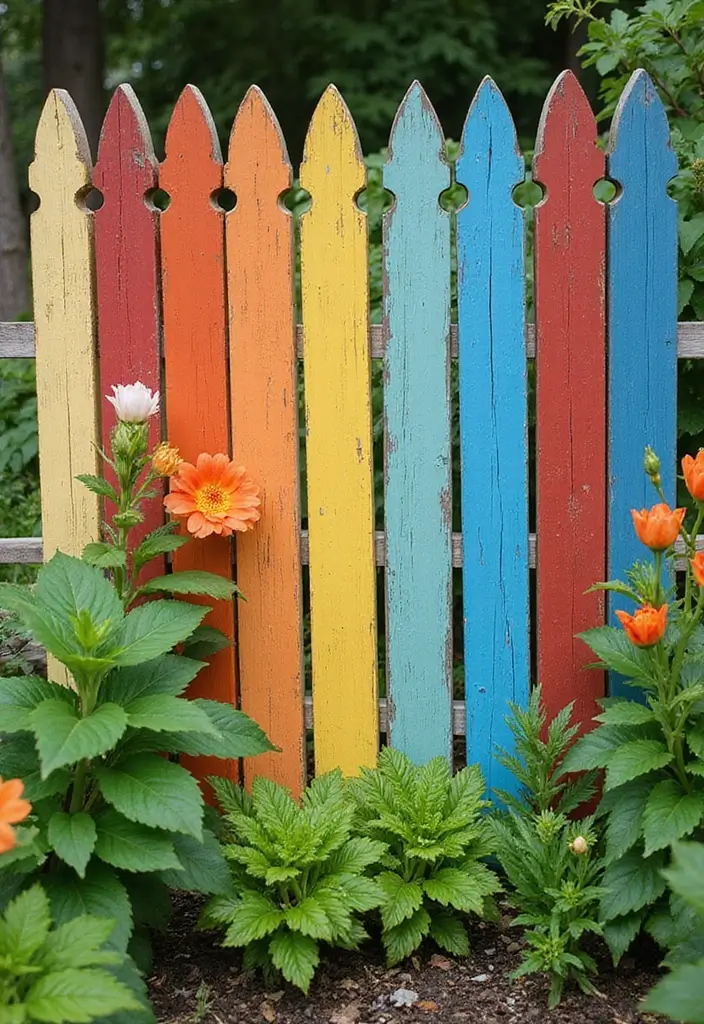
Using vertical wooden slats as a garden border adds a rustic charm to your outdoor space. These slats can be arranged in various heights to create visual interest and can even be painted to match your home’s exterior. Not only do they provide a clear boundary for your garden, but they also serve as a trellis for climbing plants.
Landscaping Tips:
– Choose rot-resistant wood like cedar or redwood to ensure longevity.
– Angle the slats for a more modern feel.
– Pair them with trailing plants or flowering vines for a lush look.
This design works wonderfully for flower beds, giving them a defined edge while allowing for vertical growth. The natural warmth of wood will complement any flower color, enhancing your garden’s overall aesthetic.
2. Stone Wall Edging
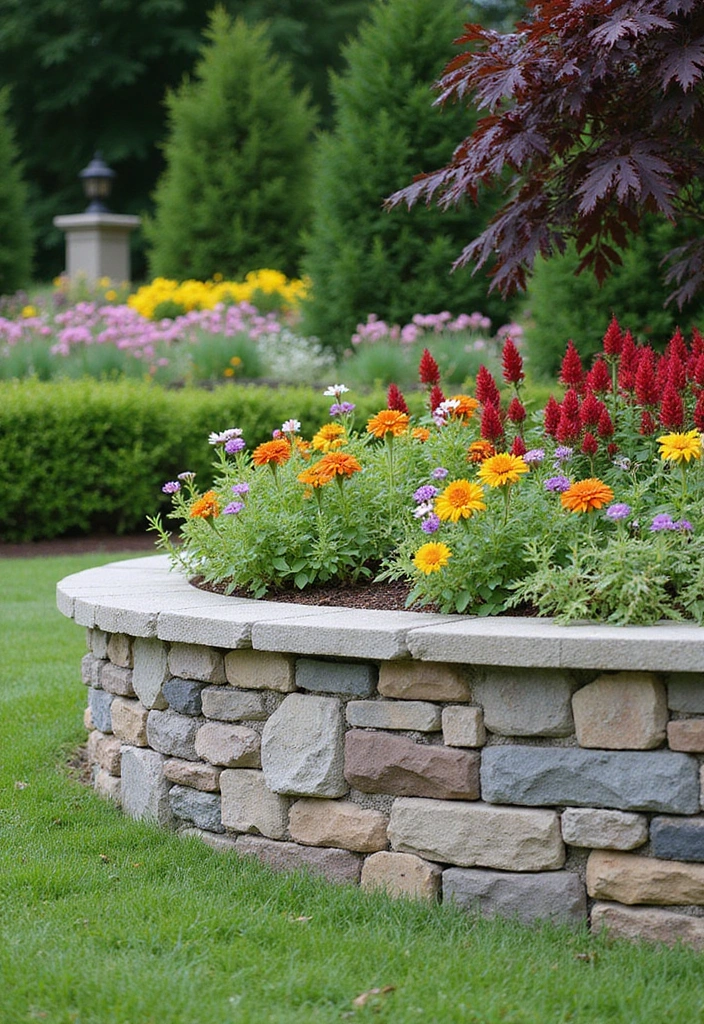
Nothing says timeless elegance like stone wall edging. A low stone wall can serve as a perfect border for your flower beds, providing a classic look that blends with the natural environment. The texture of the stones adds depth, making your garden feel more inviting.
Landscaping Tips:
– Use a mix of stone sizes for a more natural appearance.
– Incorporate gaps for plants to spill over for a softer edge.
– Consider using native stones for a local effect.
This type of border is perfect for formal gardens, giving them a structured edge while still allowing for creativity within the space. Plants like lavender or daisies can look stunning against the rugged texture of stone.
3. Vertical Pallet Garden
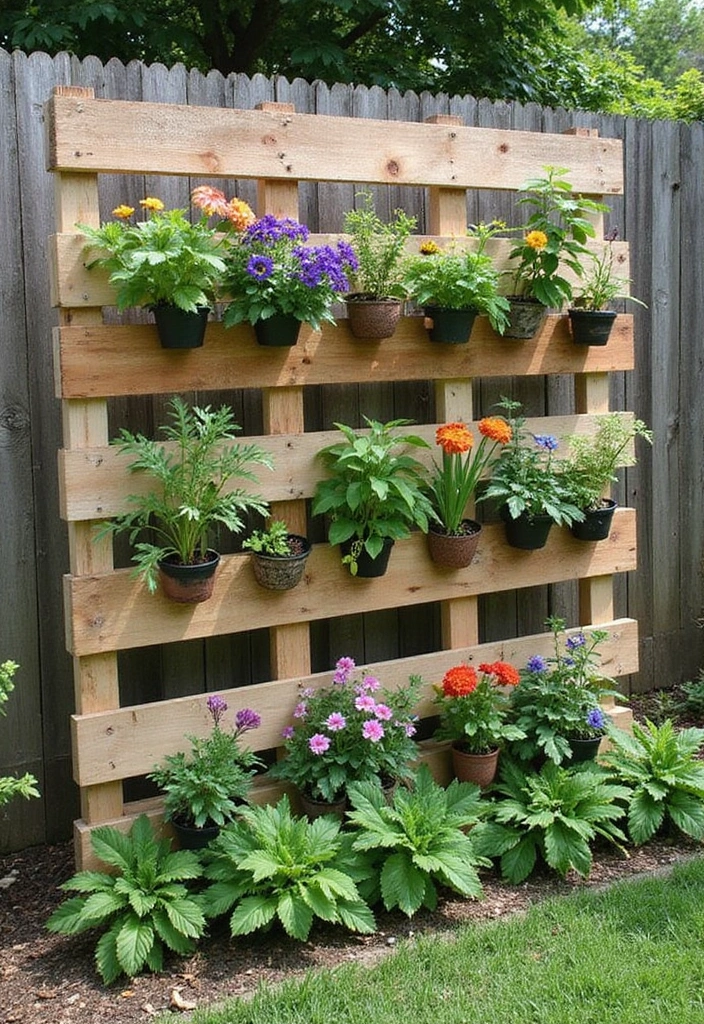
If you’re looking to save space while maximizing style, a vertical pallet garden is a fantastic idea. By repurposing wooden pallets, you can create an eye-catching border that also serves as a planting area. This border idea is not only eco-friendly but also adds a quirky touch to your garden.
Landscaping Tips:
– Secure the pallets horizontally or vertically based on your garden design.
– Line with landscaping fabric to prevent soil loss.
– Fill with herbs, flowers, or seasonal plants for added color.
The vertical nature allows for a variety of plants, making it a great choice for small spaces or urban gardens. The rustic style of the wood will bring a warm vibe to your outdoor area.
4. Metal Edging
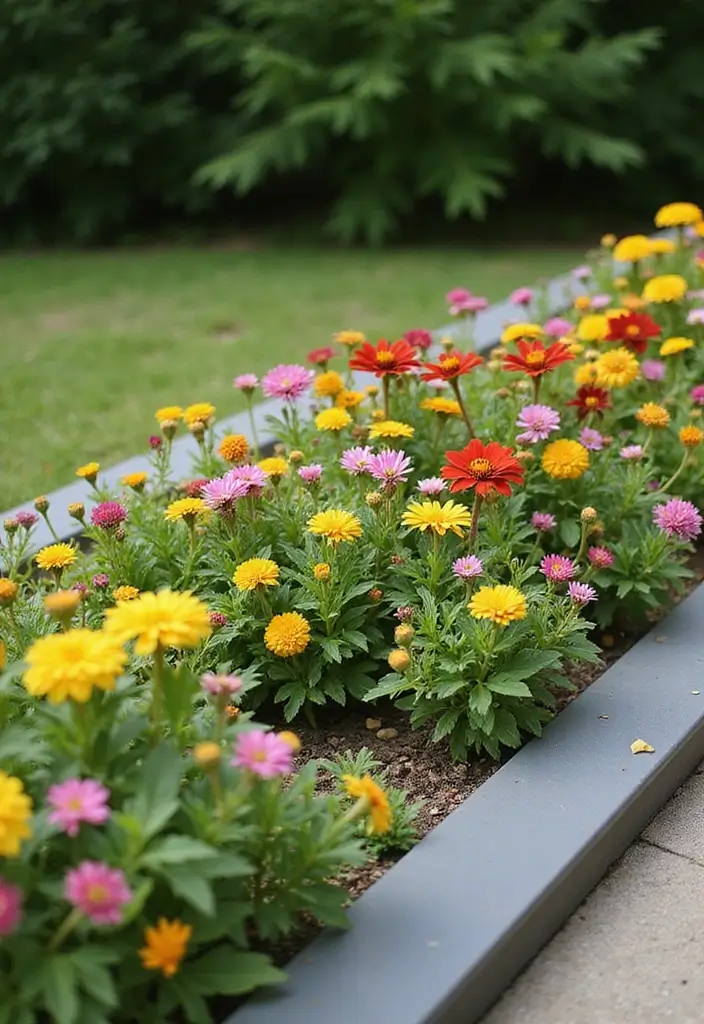
Metal edging is a sleek and modern border option that can give your garden a sophisticated look. Available in various finishes such as copper, steel, or aluminum, metal borders can adapt to any design style, from contemporary to industrial.
Landscaping Tips:
– Choose a height that suits the type of plants you have.
– Consider rust-resistant metals for longevity.
– Use curved designs for a softer aesthetic or straight lines for a modern touch.
Metal edges can create a dynamic contrast with the surrounding greenery, making your flower beds stand out. It’s especially effective if you’re planting vibrant flowers that pop against the sleek surface of the metal.
Metal edging isn’t just a border; it’s a statement! Elevate your garden with sleek designs that reflect your style—whether modern, industrial, or anything in between. Your plants deserve the spotlight!
5. Brick Borders
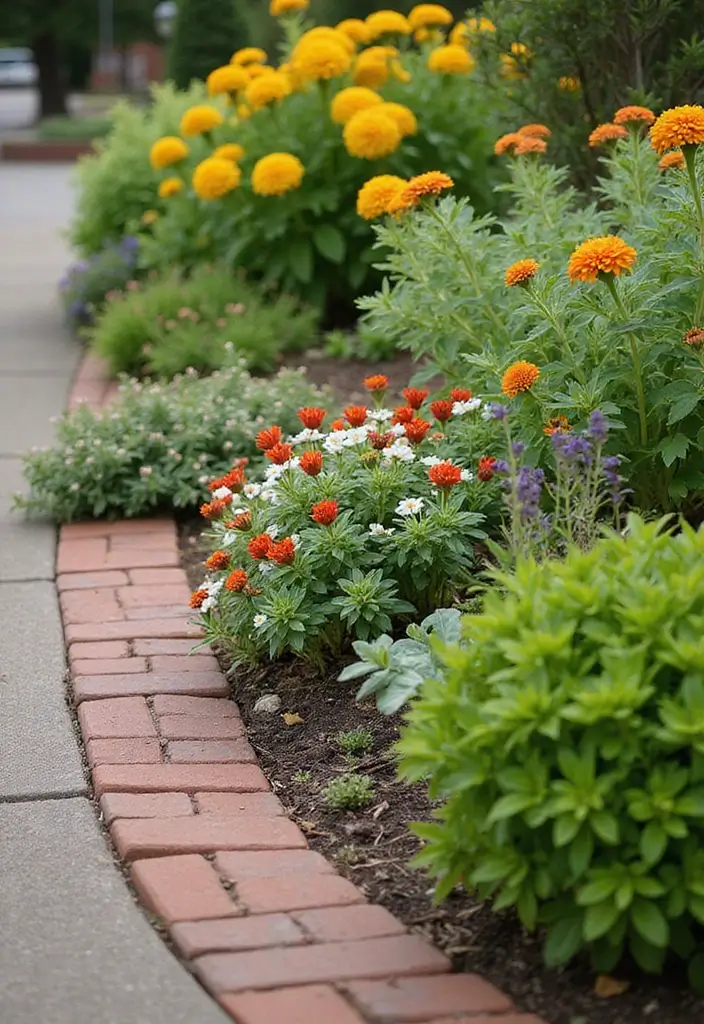
Classic and charming, brick borders can add a sense of tradition to any garden. They can be laid flat or on their sides for different effects, and the warm tones of brick complement a wide variety of plants. Plus, they can help with soil retention, making them functional as well as beautiful.
Landscaping Tips:
– Mix different shades of brick for texture.
– Ensure proper drainage to avoid water pooling around the bricks.
– Use bricks that are made for landscaping to ensure durability.
This type of border works great for flower beds, especially those filled with perennial plants that will grow back each year, creating a timeless garden design.
6. Living Plant Borders
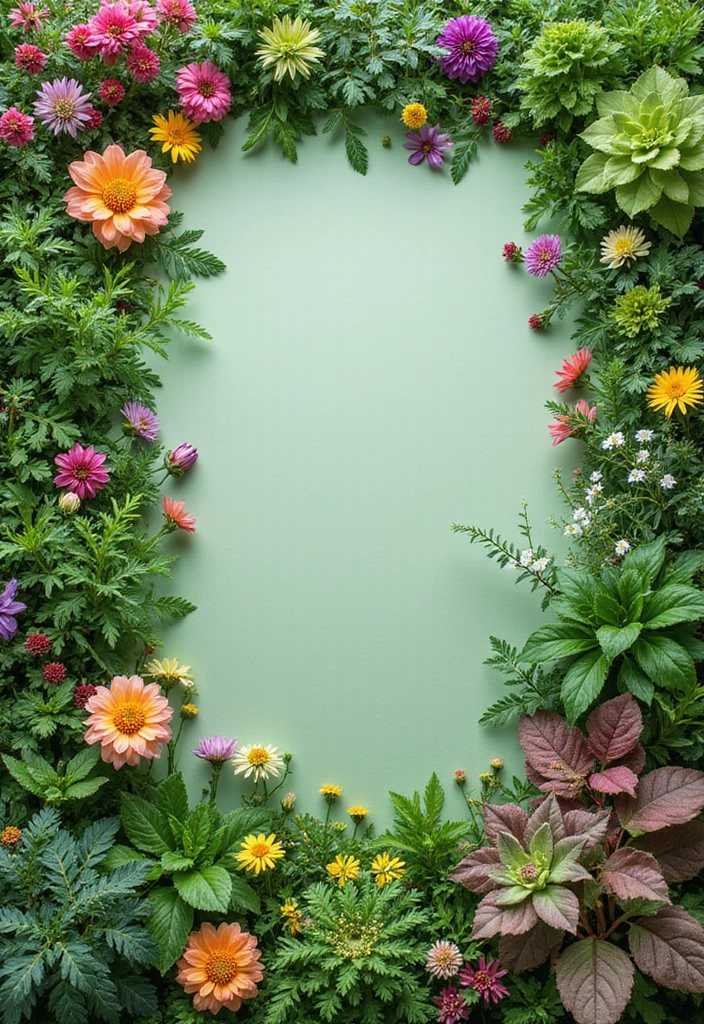
Why not let your garden borders be alive? Living plant borders are a unique way to delineate different sections of your yard while adding lush greenery and texture. You can use a variety of plants, from low-growing sedums to fragrant lavender.
Landscaping Tips:
– Choose plants that will thrive in your climate.
– Consider mixing heights for a layered effect.
– Incorporate flowering plants for added color.
These borders blend seamlessly into the rest of the garden, providing a soft, organic feel. Plus, they help with controlling soil erosion and can even attract beneficial insects.
7. Gabion Walls
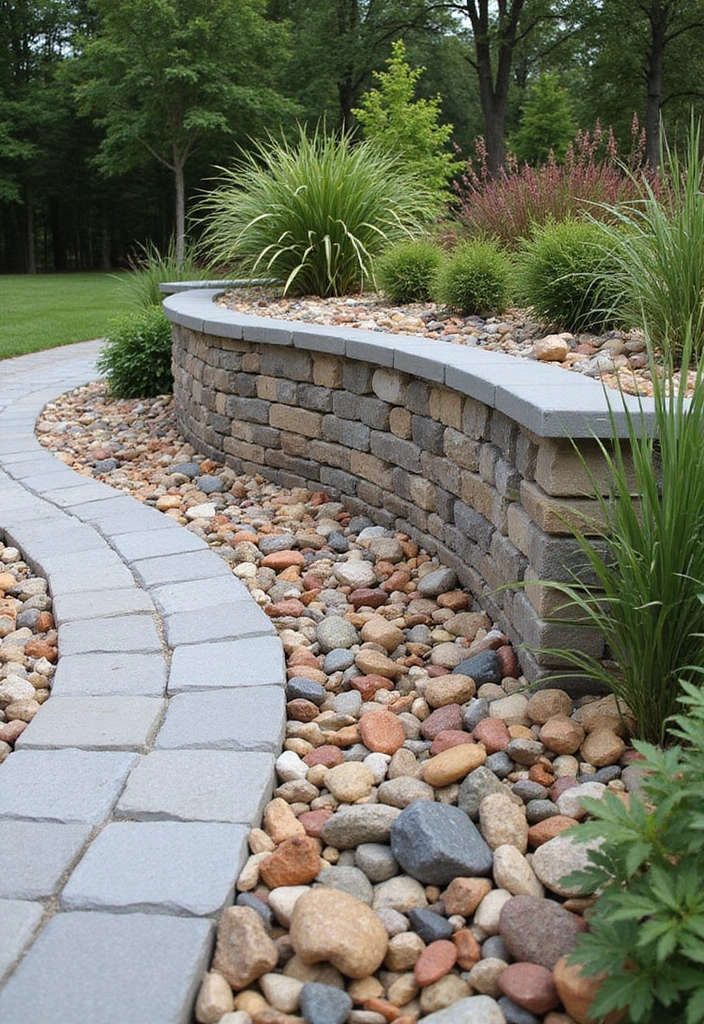
For a truly unique look, gabion walls can serve as striking garden borders. Made from wire cages filled with stones, these durable borders add a modern touch while still providing the natural element of stone. Gabion walls can also be used as seating areas or raised beds.
Landscaping Tips:
– Use different types and sizes of stones for a visually appealing mix.
– Ensure proper drainage is accounted for, especially if placing around plants.
– Consider adding top soil on top for planting.
This border style is perfect for contemporary garden designs and can be customized to fit any space. Gabions can add height and structure, making your garden feel more expansive.
8. Reclaimed Wood Edging
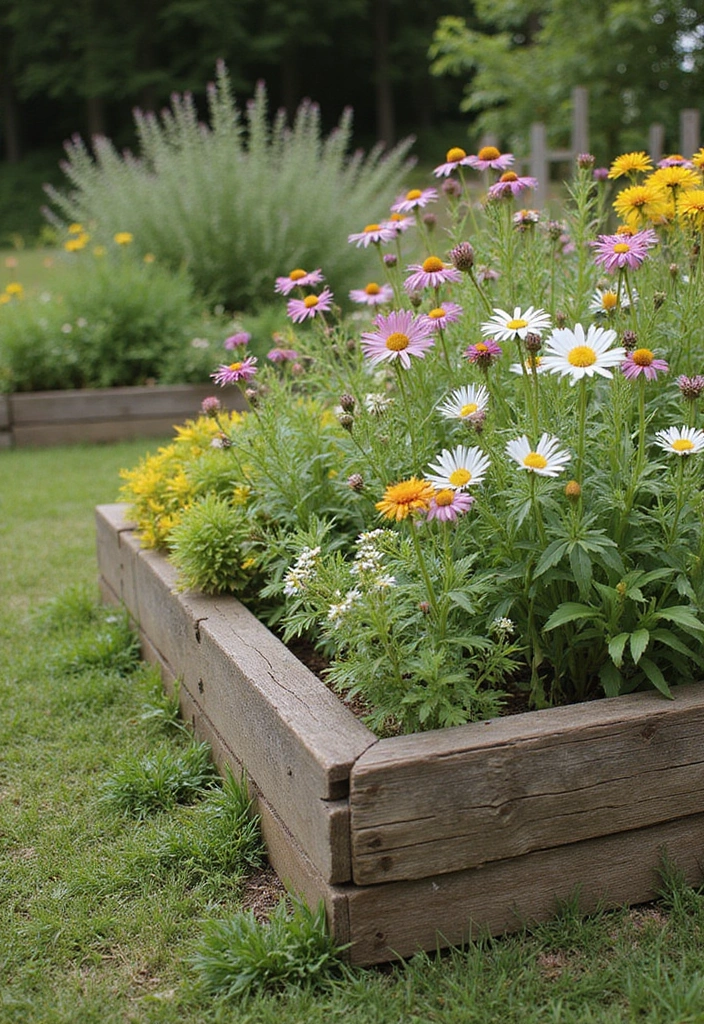
Using reclaimed wood for your garden borders is both stylish and environmentally friendly. This option adds character and charm while giving new life to old materials. Reclaimed wood can be arranged in various ways, from stacked logs to flat planks.
Landscaping Tips:
– Sand down rough edges to prevent splinters.
– Treat the wood with natural preservatives to ensure longevity.
– Pair with wildflowers or rustic plants for a cohesive look.
Reclaimed wood borders can beautifully soften the lines of your garden, making them perfect for informal spaces or cottage gardens.
9. Concrete Pavers
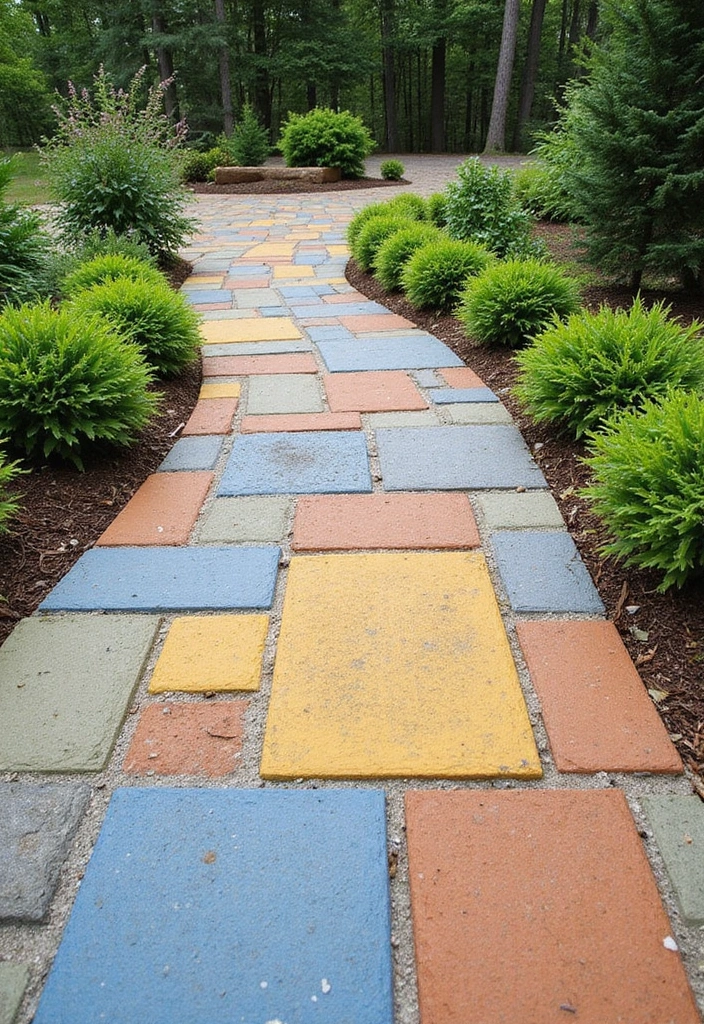
Concrete pavers provide a sturdy and versatile border option for any garden. They come in various shapes and sizes, allowing for endless design possibilities. When arranged creatively, they can act as pathways or simply outline your garden beds.
Landscaping Tips:
– Use different shapes and colors for a playful border.
– Lay them in a pattern to create visual interest.
– Ensure proper leveling to prevent tripping hazards.
This border style is perfect for modern or contemporary gardens, and when filled with low-growing plants or gravel, it can create a clean, neat look.
10. Unused Tires
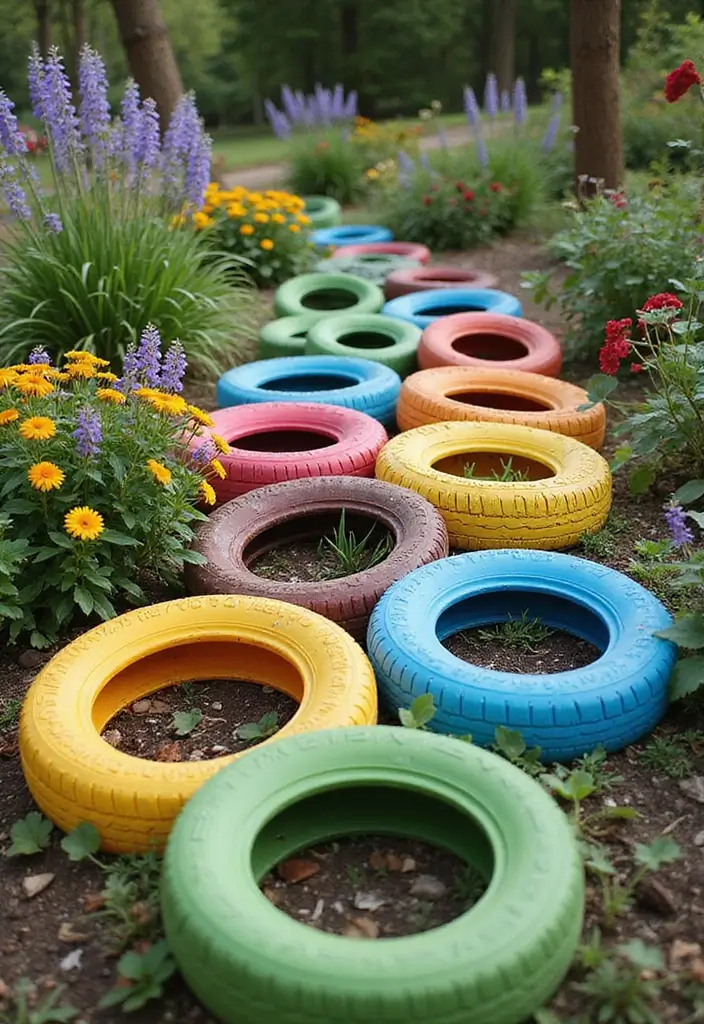
Transforming old tires into garden borders is a fun and innovative way to recycle while adding personality to your yard. You can cut them in half or paint them in vibrant colors to create a playful border around your flower beds.
Landscaping Tips:
– Use eco-friendly paint to ensure safety for plants.
– Stack tires for height or cut them for lower borders.
– Fill them with soil and plants for a unique effect.
This creative border idea is especially great for children’s gardens or whimsical landscaping styles, providing a lively edge to any garden.
11. Bamboo Fencing
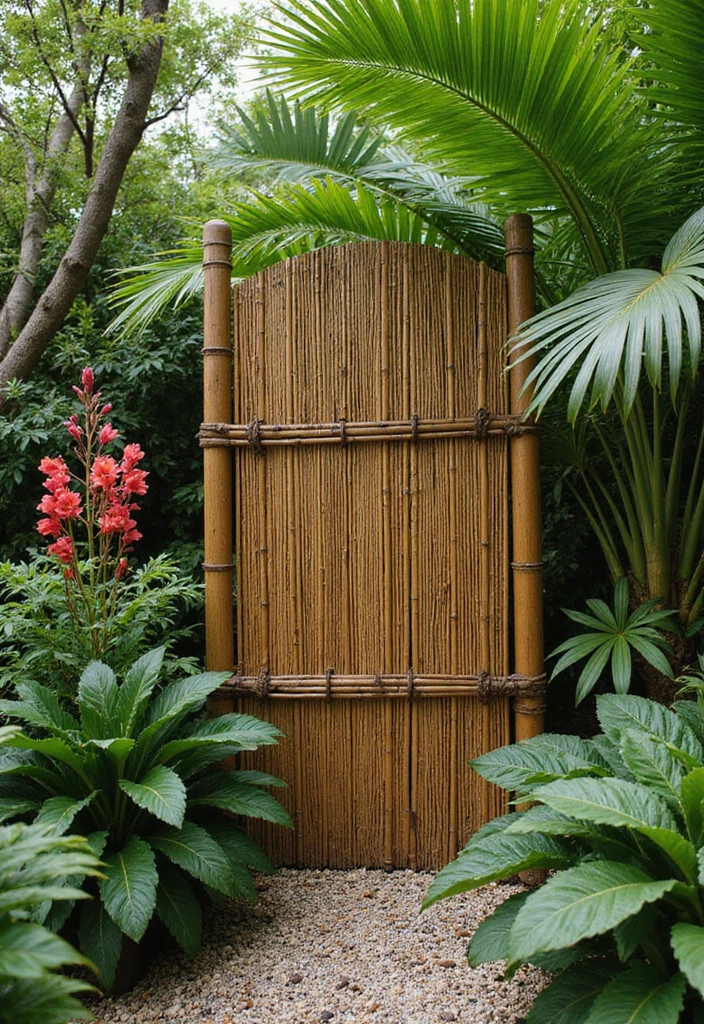
Bamboo fencing offers a tropical touch to your yard, serving as an appealing garden border. Its natural aesthetic pairs well with lush greenery, making it an excellent choice for tropical, modern, or Asian-inspired gardens.
Landscaping Tips:
– Use treated bamboo for durability against the elements.
– Create heights by stacking bamboo poles or using different widths.
– Pair with ornamental grasses for a cohesive look.
This border style creates a soothing atmosphere and can be integrated seamlessly into your landscape, adding a soft, organic vibe.
12. Glass Bottles
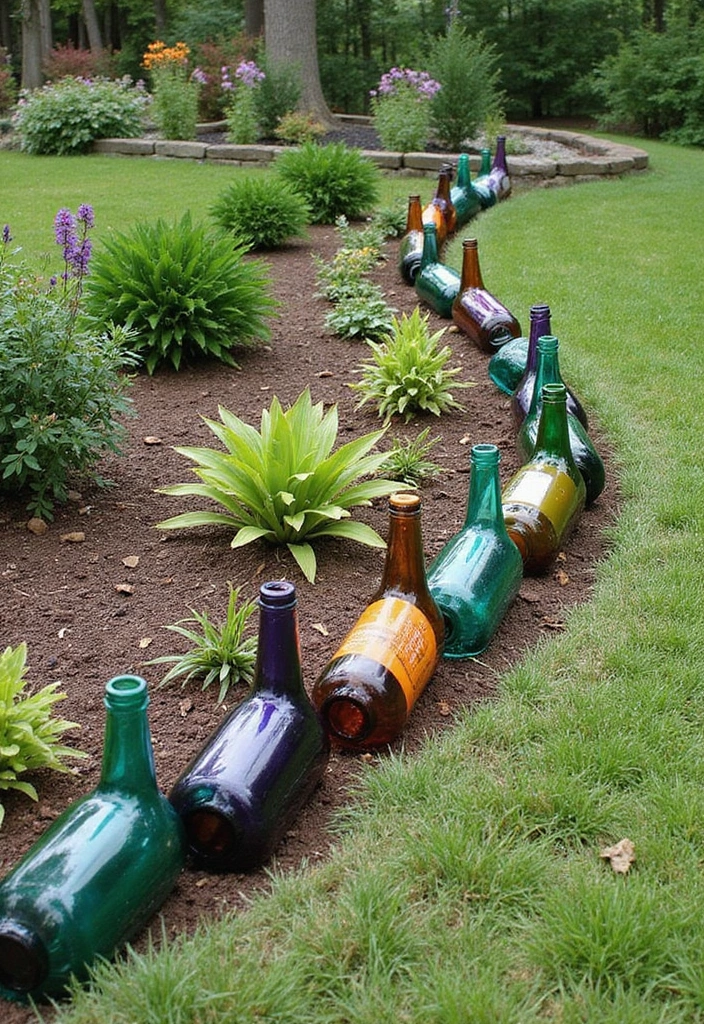
For an eco-friendly and artistic touch, consider using glass bottles as garden borders. You can bury them neck down in the ground to form a colorful, whimsical edge around your beds. This unique idea not only recycles bottles but also adds a creative flair to your garden.
Landscaping Tips:
– Use a variety of colored bottles for a vibrant effect.
– Ensure bottles are sturdy and securely placed.
– Pair with low-maintenance plants for a striking contrast.
Glass bottles can transform a simple border into a fun and eye-catching feature. This option is especially great for gardens with a playful theme or vintage feel.
Add a splash of color to your garden with recycled glass bottles! Not only do they create a whimsical border, but they also show that eco-friendly choices can be truly beautiful.
13. Pebble and Gravel Borders
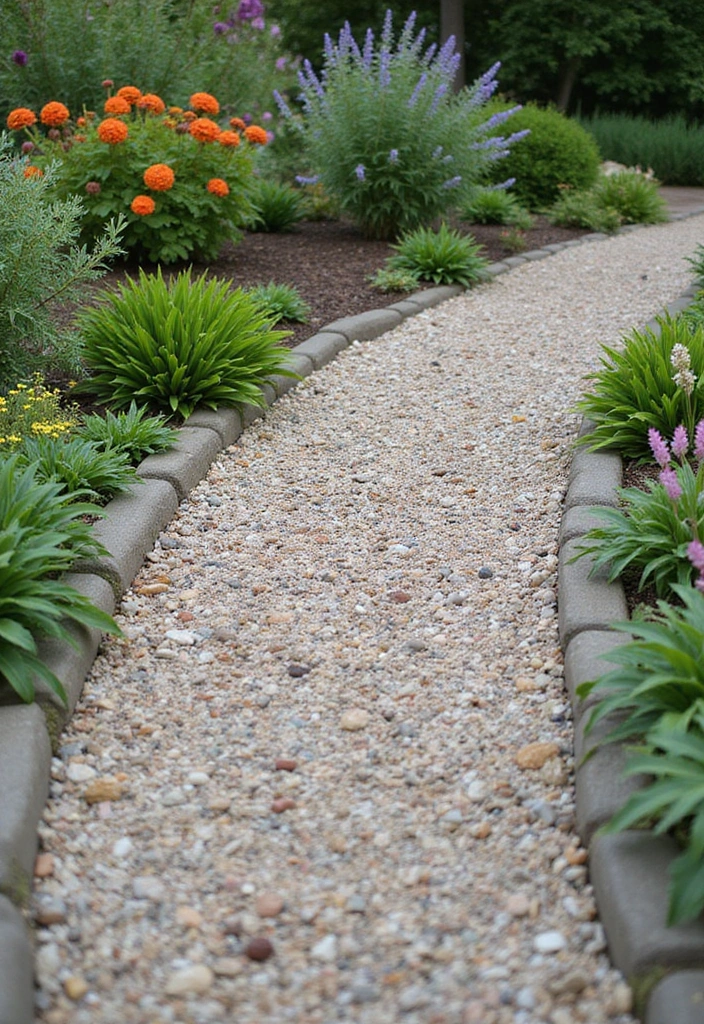
Pebble and gravel borders provide a low-maintenance, natural option for edging your garden. Not only do they define the spaces well, but they also help with drainage and weed control. Plus, the soothing sound of gravel crunching underfoot adds a charming element to any outdoor setting.
Landscaping Tips:
– Create a barrier with landscaping fabric underneath to prevent weeds.
– Use varying sizes of pebbles for texture.
– Consider adding stepping stones for accessibility.
This border style is perfect for zen gardens or modern landscapes, offering a clean and uncluttered look that highlights your plants.
14. Terra Cotta Edging
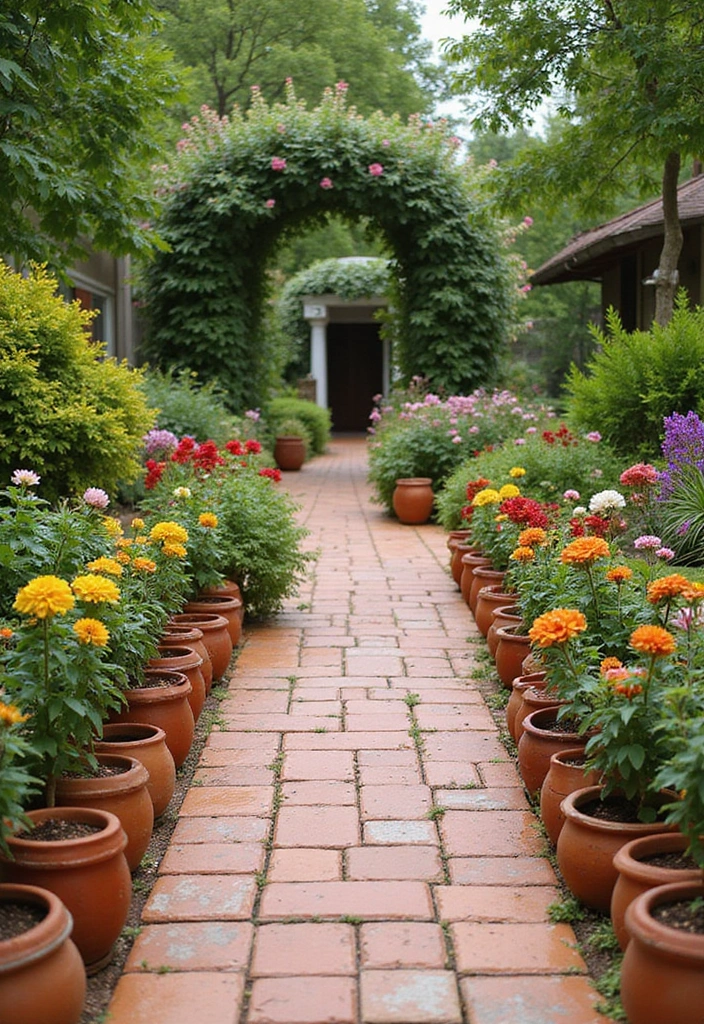
Terra cotta pots or tiles can be repurposed as an attractive border for garden beds. The warm colors of terra cotta offer a vibrant contrast against lush greenery, creating a welcoming feel. You can use whole pots, or cut them in half for a unique appearance.
Landscaping Tips:
– Ensure proper drainage when using pots in the ground.
– Mix different sizes for visual interest.
– Pair with Mediterranean plants for a cohesive theme.
This option is especially great for gardens with a warm palette, adding a pop of color and texture.
Transform your garden with terra cotta! This vibrant edging not only enhances your space but also brings a touch of Mediterranean charm to your yard. Mix and match pot sizes for a truly unique look!
15. Succulent Edging
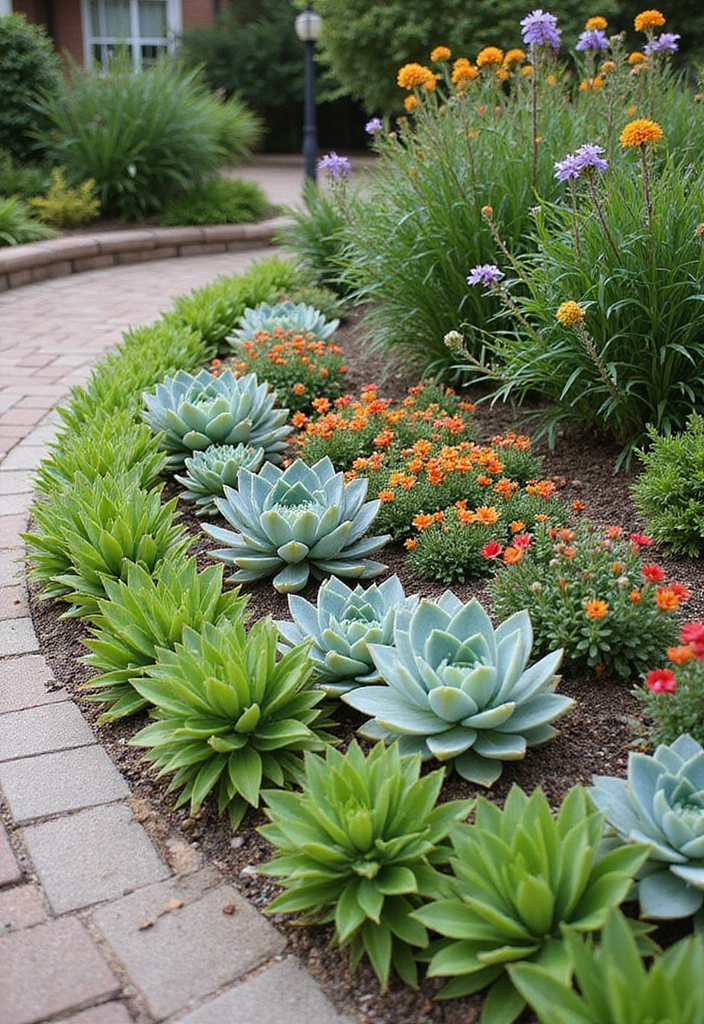
Succulents are not only trendy but also perfect for creating a striking garden border. Their unique shapes and vibrant colors can add depth and texture to your flowers or vegetables. Plus, they require minimal maintenance, making them a practical choice for busy gardeners.
Landscaping Tips:
– Choose low-growing succulent varieties for the best effect.
– Mix and match colors for a playful border.
– Consider pairing with stones or gravel for a cohesive look.
Succulents work beautifully in sunny spots and will thrive, creating a beautiful living border that changes with the seasons.
16. Recycled Glass Edging
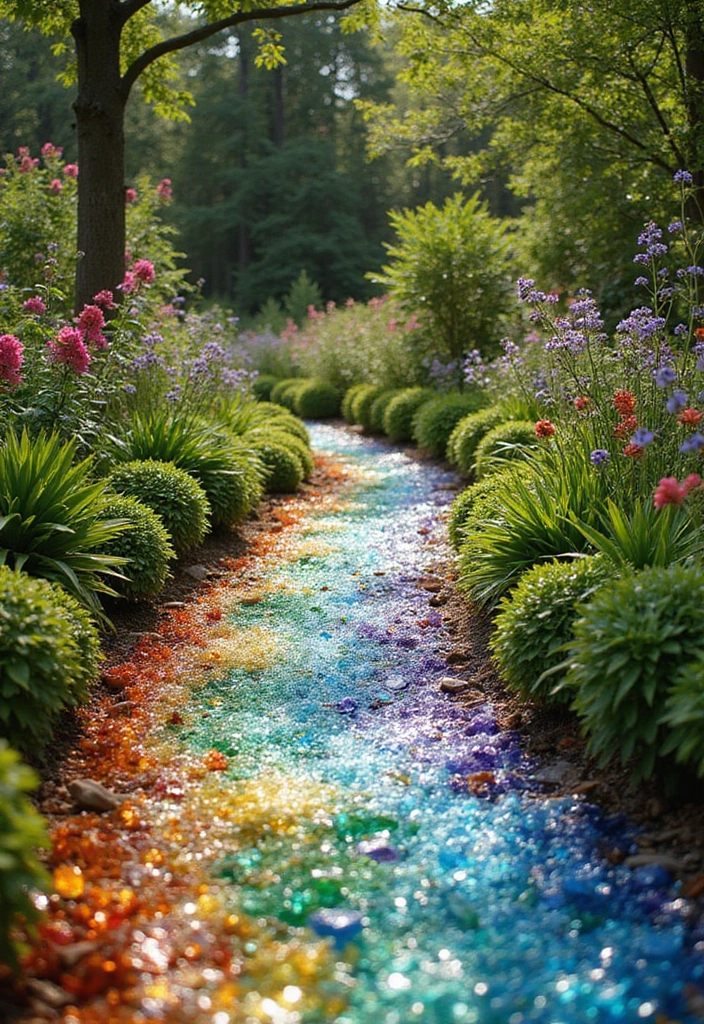
For those who love a splash of color, recycled glass edging can add a unique twist to your garden border. Made from crushed glass, this material glimmers in the sunlight and can create a stunning visual impact. It’s perfect for modern gardens that need a bit of flair.
Landscaping Tips:
– Ensure the glass is well-placed to prevent sharp edges.
– Mix with rocks for a dynamic texture.
– Use in areas with minimal foot traffic.
This border style is not just decorative; it also promotes recycling and sustainability in your landscaping.
17. Driftwood Borders
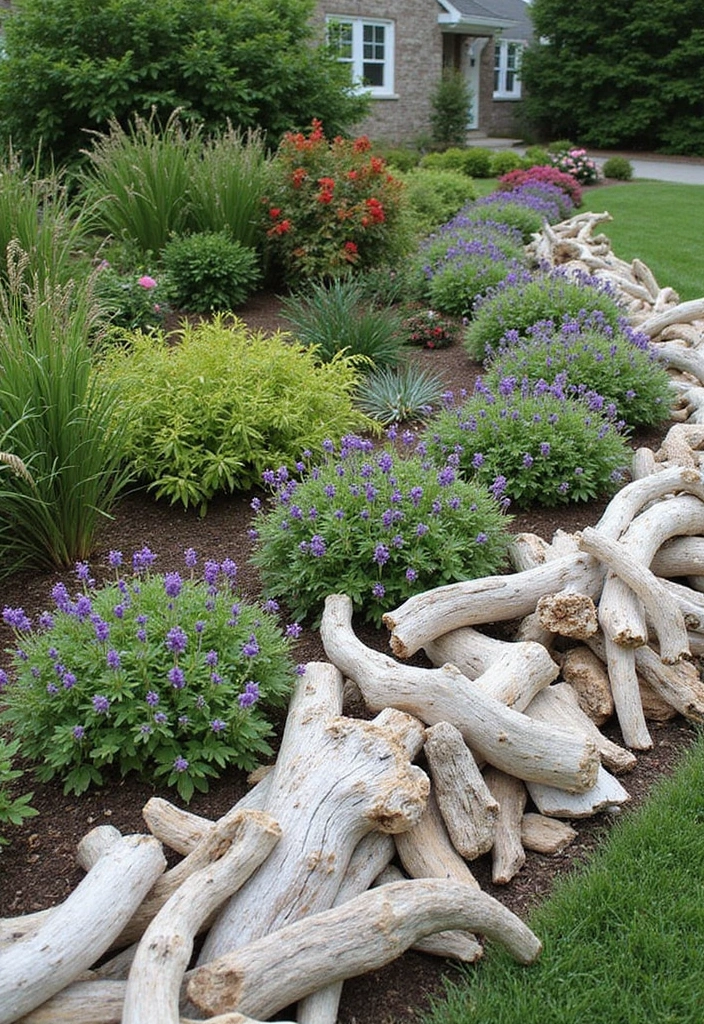
Bringing the beach to your garden, driftwood borders can add a natural, coastal vibe to your yard. Their varied shapes and colors can be arranged in unique formations, providing a rustic charm that complements any garden.
Landscaping Tips:
– Choose pieces that have been weathered for a natural look.
– Lay them in a winding path for a whimsical effect.
– Pair with beach-themed plants for cohesion.
This border works well in informal gardens, adding an organic touch that feels right at home in any outdoor setting.
18. Low Maintenance Synthetic Edging
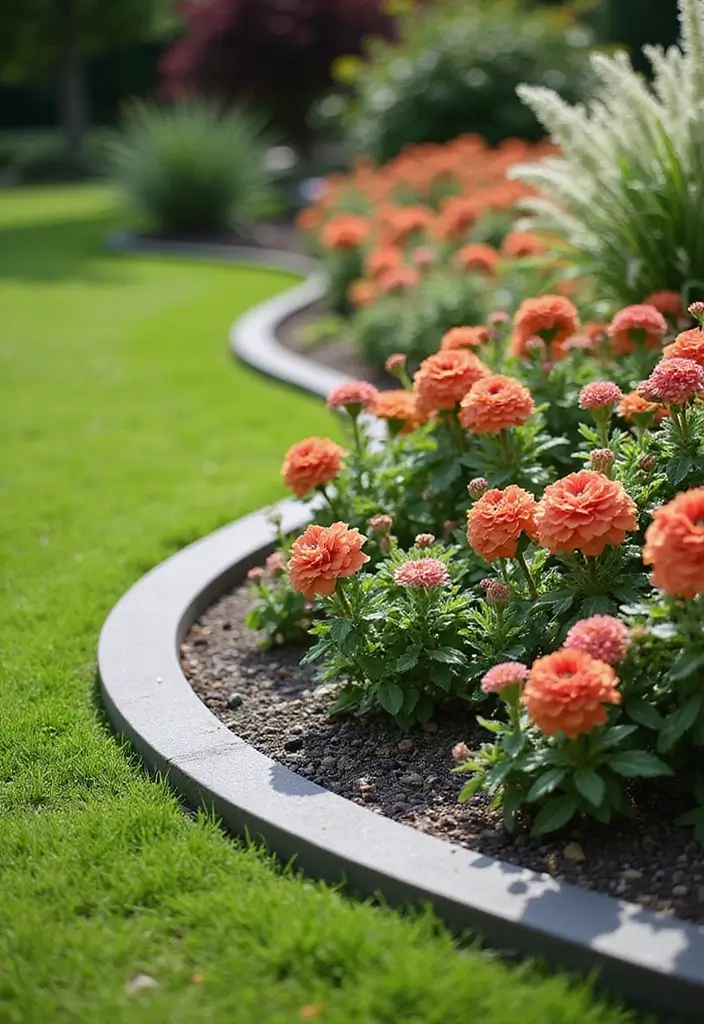
For a clean and polished look, synthetic edging can be an excellent option. Made from materials like plastic or rubber, synthetic borders can mimic the appearance of wood or stone without the maintenance. They come in various styles and colors, fitting into any garden design seamlessly.
Landscaping Tips:
– Choose UV-resistant materials for durability.
– Ensure proper installation to prevent movement.
– Pair with both flowers and shrubs for a neat appearance.
This style is particularly suited for contemporary gardens or those looking for an easy-care solution.
19. Curved Edging
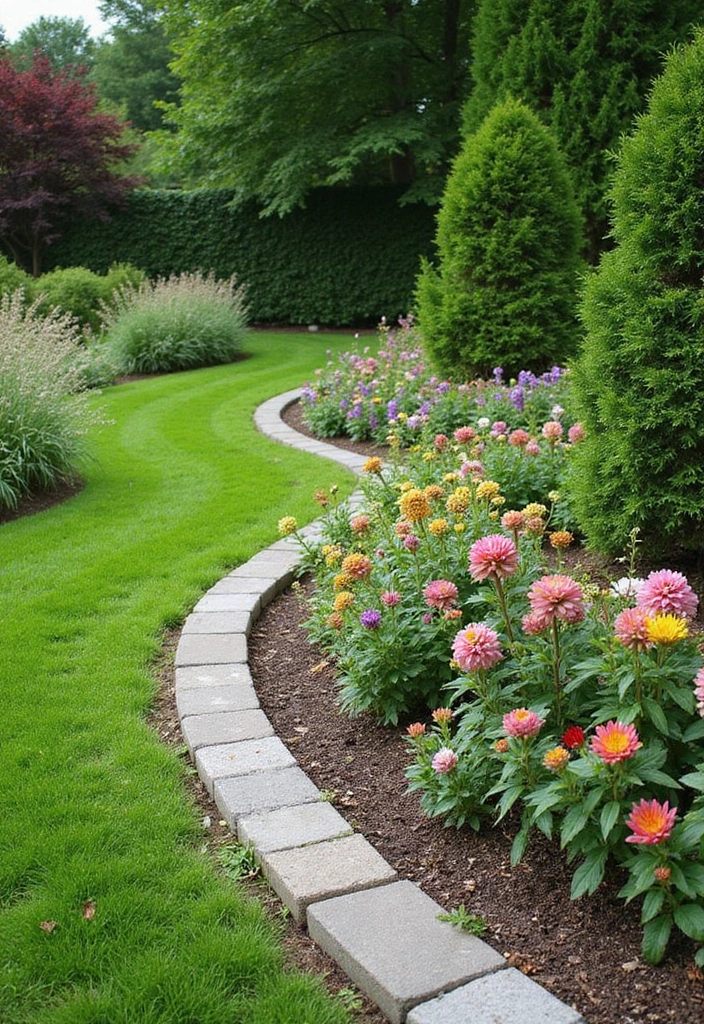
Curved edging is a fantastic way to add softness to your garden’s design. Instead of straight lines, curved borders can create a flowing feel that mimics nature. Curved edges are particularly inviting and can be achieved with various materials, including brick, wood, or metal.
Landscaping Tips:
– Use a garden hose to outline the desired curve before digging.
– Mix materials to enhance the visual interest.
– Incorporate large plants or shrubs to highlight the curves.
This design idea is perfect for herb gardens or flower beds, creating a soothing transition between different areas of your yard.
Curved edging isn’t just about beauty; it’s a gentle invitation to explore your garden. Embrace the flow of nature and watch your landscape transform into a serene retreat!
20. Natural Log Edging
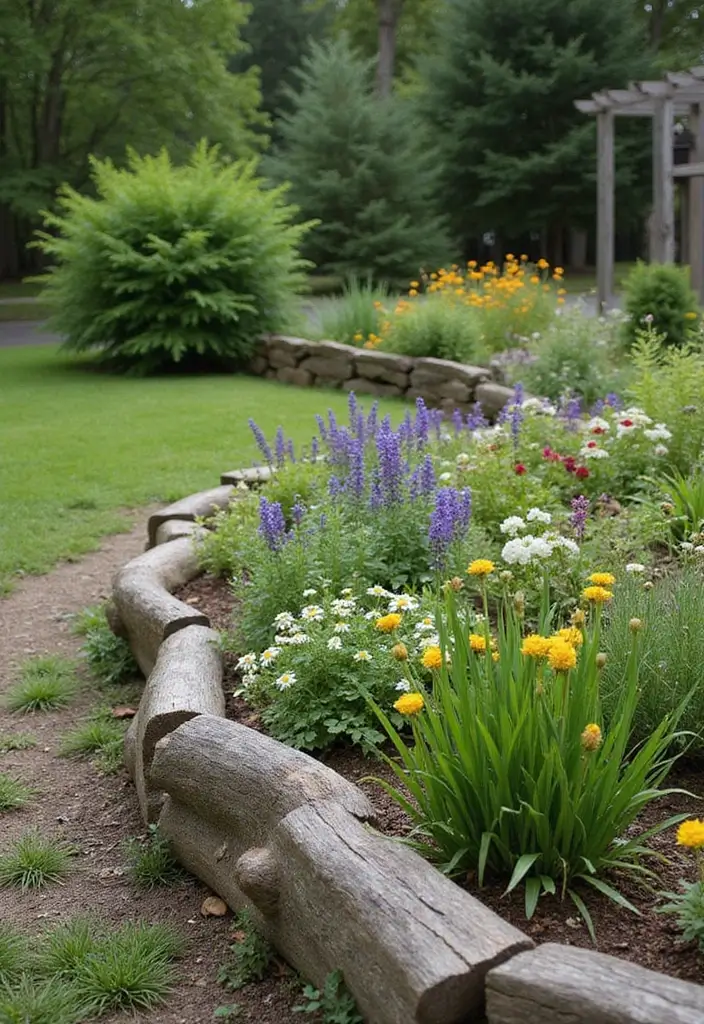
Natural logs can serve as a rustic and beautiful border that fits seamlessly into any garden setting. They offer a raw, organic aesthetic while defining the edges of your garden or flower bed. Logs can be arranged upright, flat, or stacked for different effects.
Landscaping Tips:
– Use untreated logs to avoid chemicals leaching into the soil.
– Arrange logs at varying heights for added interest.
– Pair with woodland plants for a cohesive look.
This style is perfect for creating a charming, country-style garden that invites exploration.
21. Creative Signage Borders

Incorporating creative signage as a border is an innovative way to personalize your garden. You can use wooden planks or even upcycled materials to create charming signs that define garden sections. This idea is not just functional but adds a playful touch to your outdoor space.
Landscaping Tips:
– Use waterproof paints for longevity.
– Include plant names or whimsical phrases.
– Ensure signs are securely anchored to prevent tipping.
This approach works best in family-friendly gardens, encouraging exploration and engagement with the space. It’s a fantastic way to make your garden uniquely yours.
22. Edible Borders
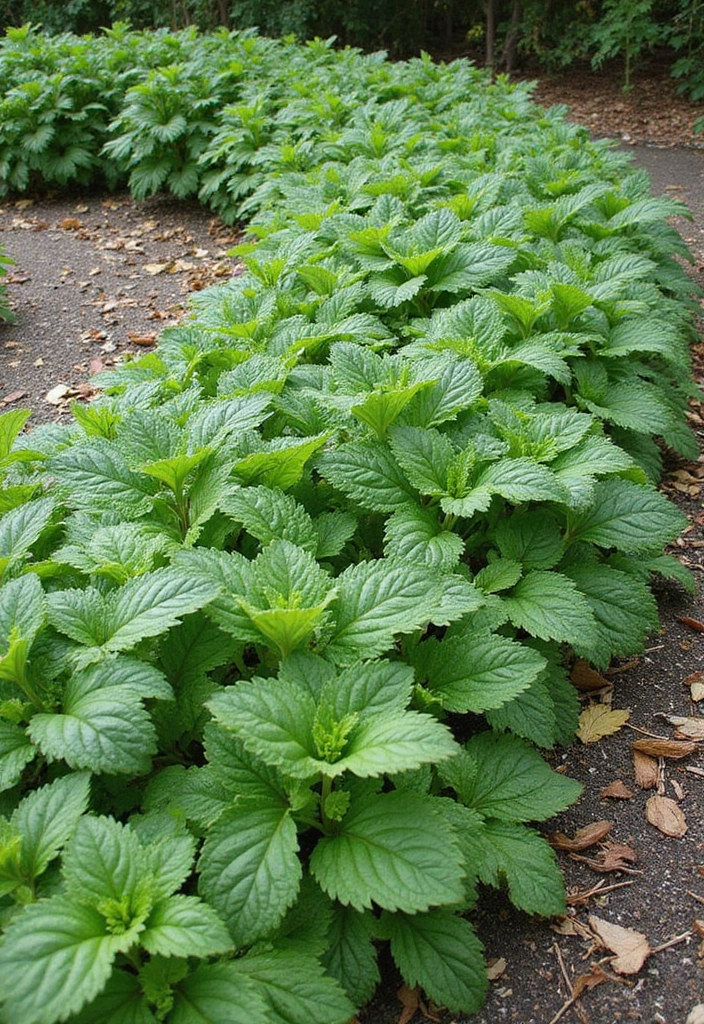
Why not make your garden borders functional? Edible borders consist of herbs, vegetables, or edible flowers that not only look great but can also be harvested for cooking. This practical approach adds beauty and utility to your garden.
Landscaping Tips:
– Choose plants that complement each other in terms of growth and flavor.
– Use dwarf varieties for a neat appearance.
– Consider vertical strategies for climbers, maximizing your space.
Edible borders work wonderfully in kitchen gardens and provide easy access to fresh ingredients while enhancing the overall garden design.
23. Colorful Plastic Edging
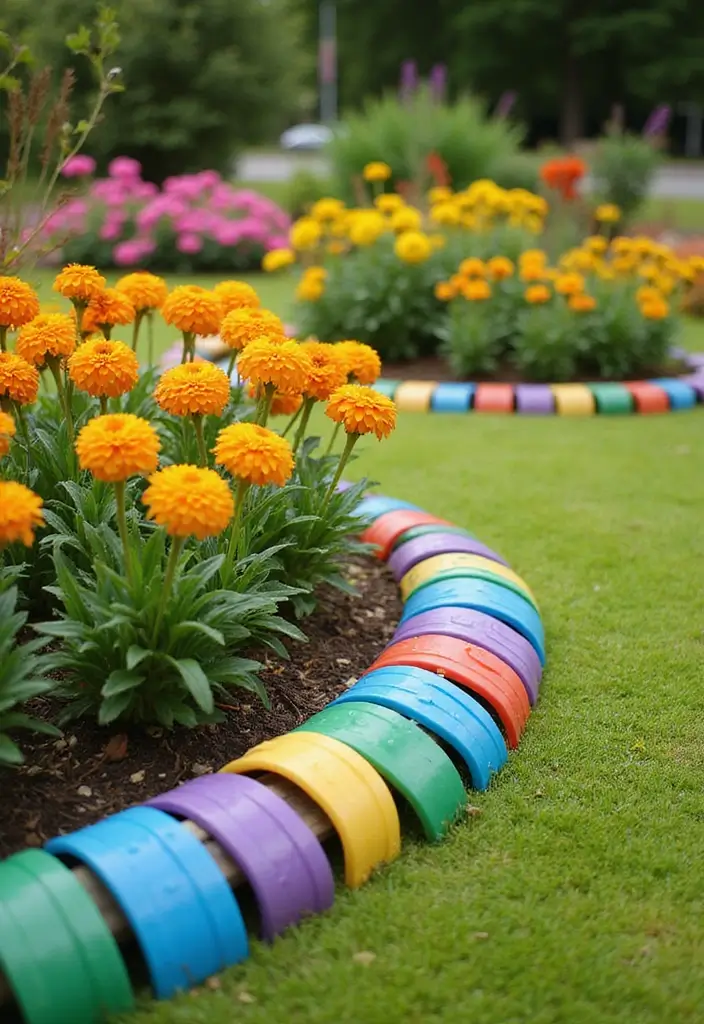
Colorful plastic edging is a fun and budget-friendly option for those looking to spruce up their garden borders. Available in a variety of colors, this type of edging can brighten up any landscape and is simple to install. It’s perfect for creating defined spaces without breaking the bank.
Landscaping Tips:
– Choose UV-resistant plastic to avoid fading.
– Consider multiple colors for a playful approach.
– Ensure proper installation to maintain shape and function.
This style is especially appealing for children’s gardens or playful landscapes, inviting creativity and fun into the design.
24. Chic Tile Borders

Chic tile borders can add an elegant twist to your garden design. Tiles come in many colors and patterns that can reflect your personal style. They can be arranged in various geometric designs to enhance the visual appeal of your space.
Landscaping Tips:
– Choose slip-resistant tiles for safety.
– Mix different patterns for a unique look.
– Ensure proper leveling during installation.
This type of border is ideal for modern gardens, offering a stylish and sophisticated edge around flower beds or seating areas.
25. Concrete Block Borders
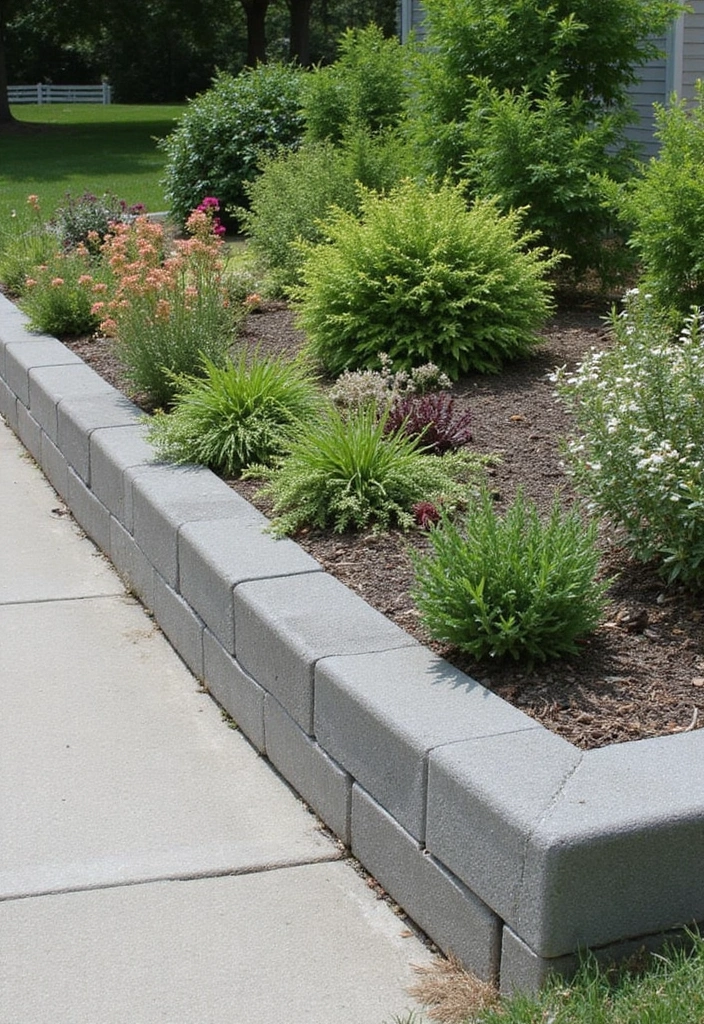
Concrete blocks are a sturdy and practical option for garden borders, allowing you to create straight lines and defined spaces easily. They can be painted or left in their natural color, depending on your design preference. This border option is perfect for creating raised beds or partitioning different areas of your yard.
Landscaping Tips:
– Ensure blocks are level for a polished look.
– Fill the gaps with soil for planting herbs or flowers.
– Consider painting for a customized touch.
This style works well in urban gardens, providing a modern yet functional aesthetic that can adapt to various design styles.
26. Colorful Mulch Borders
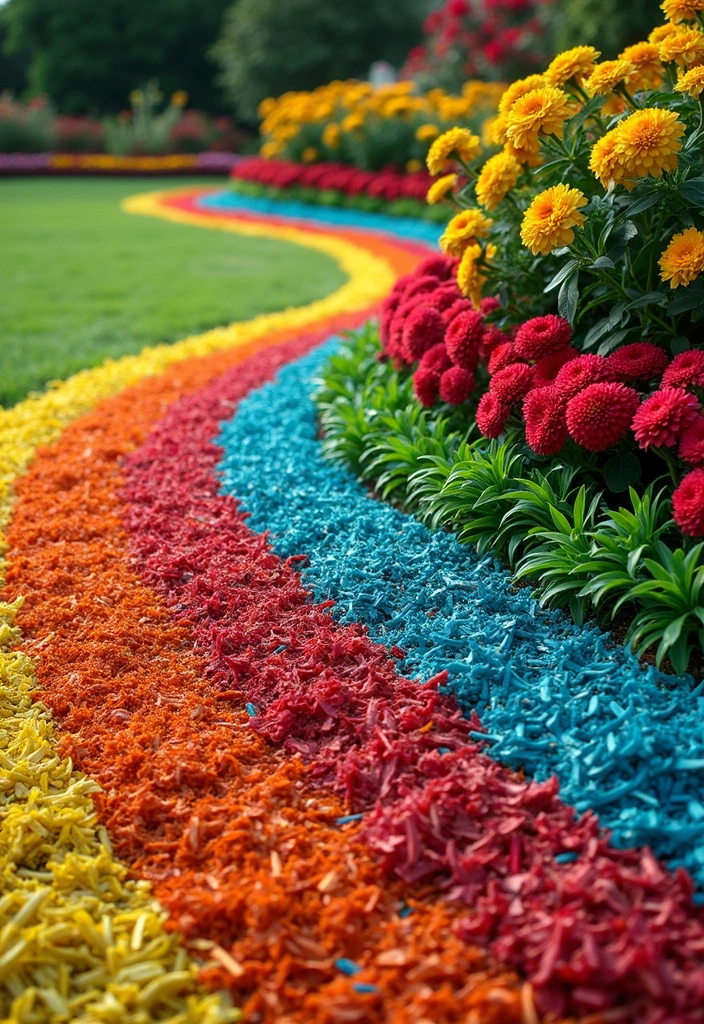
Using colored mulch as a border for your garden beds can add a pop of color and serve as a great organic material that helps retain moisture and suppress weeds. Mulch comes in various colors, allowing you to customize the look of your garden.
Landscaping Tips:
– Choose biodegradable mulch to support the environment.
– Ensure a thickness of about 2-3 inches for effectiveness.
– Pair with contrasting plant colors for maximum impact.
This option works beautifully in flower gardens or vegetable patches, enhancing the overall aesthetics while providing essential care for your plants.
27. Trellis Borders
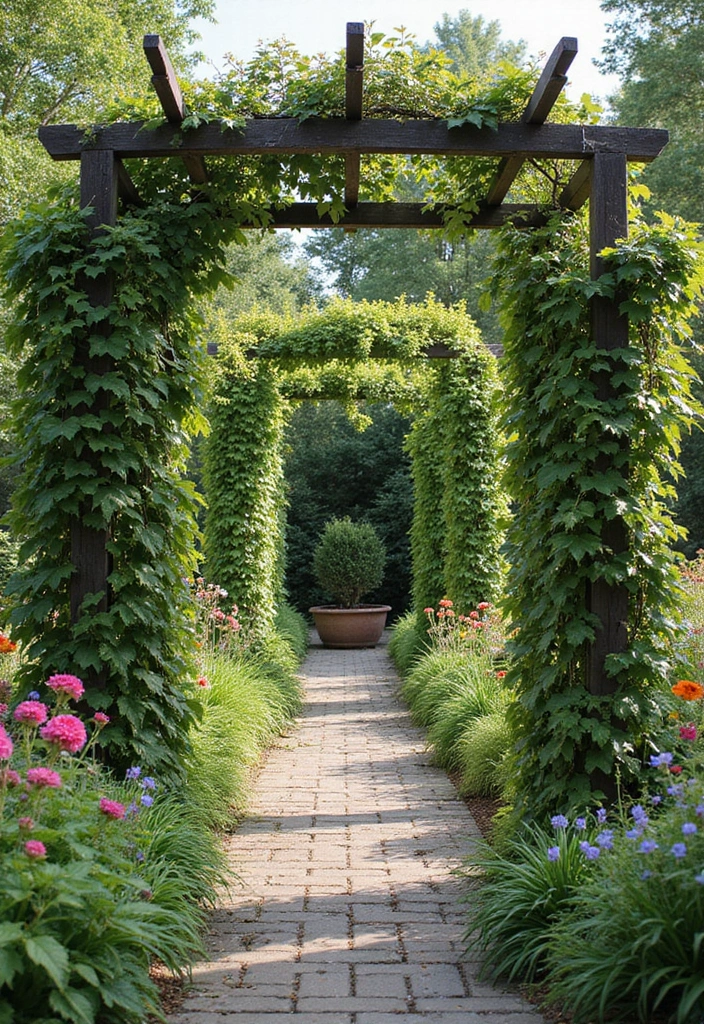
Trellis borders are an excellent way to add verticality to your garden. These structures can support climbing plants while providing a beautiful framework for your garden beds. They come in various designs, from ornate to simple, and can easily transform the look of your outdoor space.
Landscaping Tips:
– Secure trellises properly to withstand the weight of climbing plants.
– Use fast-growing vines for quick coverage.
– Consider painting the trellis to match your garden theme.
This border style is perfect for romantic or cottage gardens, encouraging lush growth and providing a habitat for beneficial wildlife.
28. Integrated Seating Borders
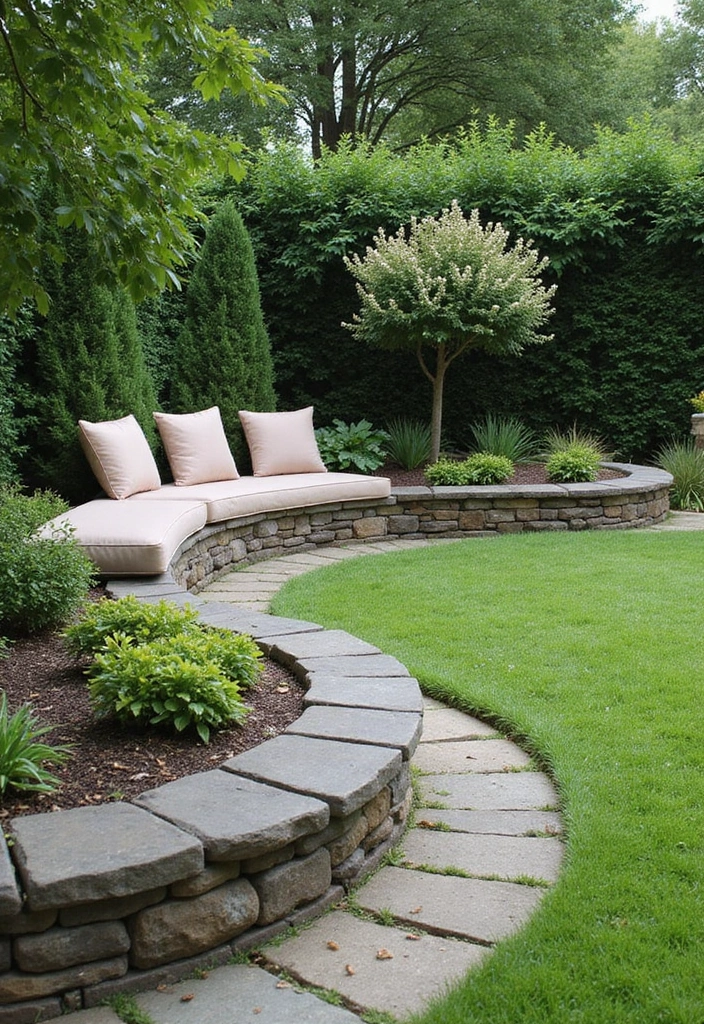
Imagine a garden border that doubles as seating! Integrated seating borders provide a functional and stylish way to create boundaries in your garden while offering a cozy place to relax. You can use materials like stone or wood to create benches along the edges of your garden beds.
Landscaping Tips:
– Ensure seating is comfortable and properly constructed.
– Choose durable materials that withstand the weather.
– Enhance with cushions or pillows for added comfort.
This idea works beautifully in patios or larger gardens, creating an inviting atmosphere for family and friends while clearly defining garden spaces.
29. Seasonal Flower Borders
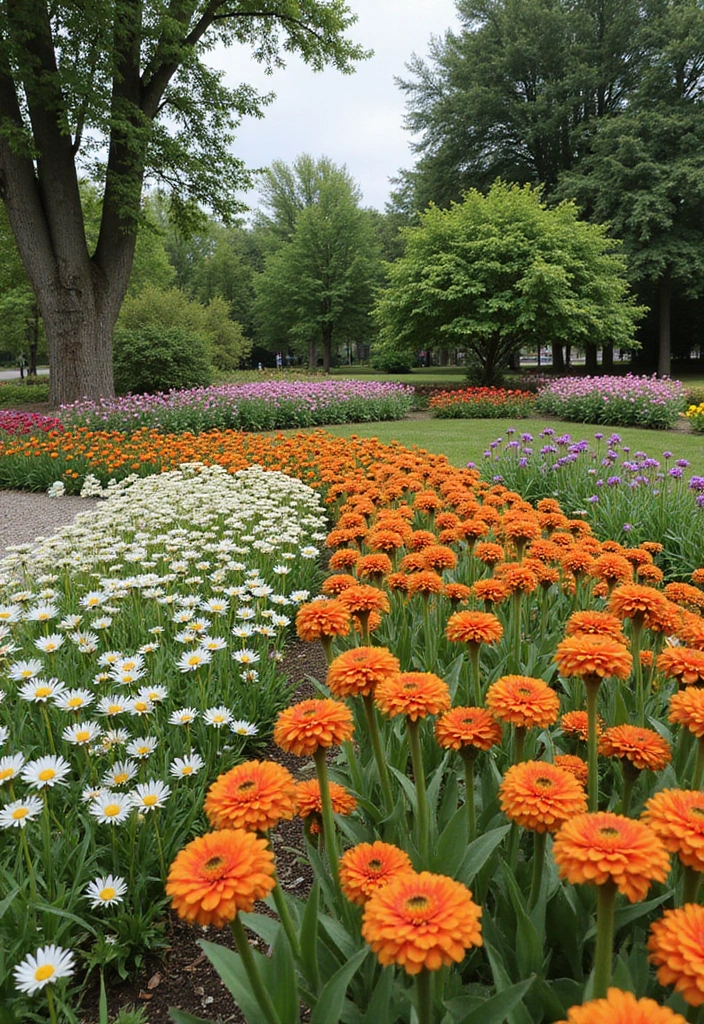
Using seasonal flowers as borders can add dynamic beauty to your garden throughout the year. By planting flowers that bloom in different seasons, you can create a constantly evolving border that showcases nature’s palette. This approach not only enhances visual appeal but also attracts pollinators to your garden.
Landscaping Tips:
– Plan your plantings for continuous bloom.
– Choose a variety of colors to create depth.
– Group flowers in odd numbers for a more natural look.
This style is perfect for those who love change and want their gardens to reflect the seasons’ shifting beauty.
30. Artistic Sculptural Borders

Make a statement with artistic sculptural borders that not only serve as a boundary but also as focal points. These can be made from various materials like metal or stone and can be designed in abstract shapes or themed to suit your garden’s style.
Landscaping Tips:
– Ensure sculptures are stable and securely placed.
– Choose materials that complement your garden’s theme.
– Incorporate lighting to highlight the sculptures at night.
This border option is particularly effective in modern or contemporary gardens, where form and function meet to create stunning landscapes.
Conclusion
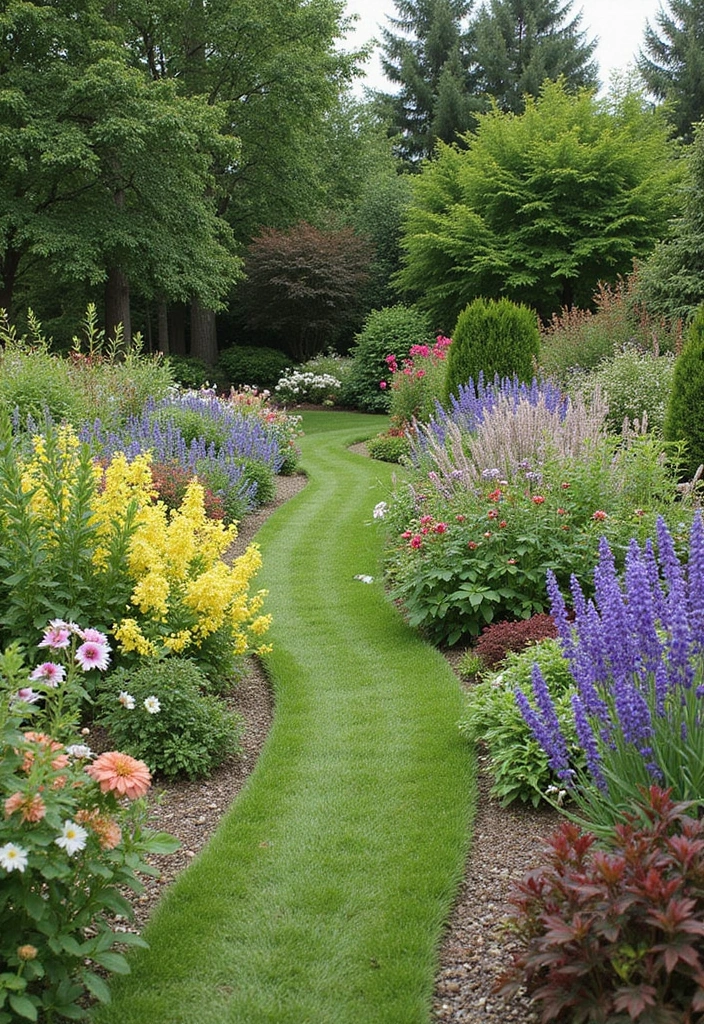
Upgrading your garden with stylish borders can completely transform your outdoor space. With these 30 garden border ideas, you can add personality, structure, and beauty to your yard in so many ways.
Whether you choose a whimsical approach with bright colors and fun materials or go for a more classic and sophisticated look, your garden can truly reflect your personal style and creativity. Now’s the perfect time to get started on your garden makeover!
Frequently Asked Questions
What are some budget-friendly garden border ideas?
When it comes to creating beautiful garden borders without breaking the bank, there are plenty of options! Consider using recycled materials like old tires, wooden pallets, or even glass bottles to create unique edges for your garden. These materials not only save you money but also add a personal touch to your outdoor decor.
Additionally, using colorful mulch as a border can be a cost-effective way to enhance your garden’s appearance while suppressing weeds.
How can I choose the right edging materials for my garden borders?
Selecting the right edging materials depends on your garden’s style, budget, and maintenance preferences. For a rustic look, consider using natural materials like wood or stone. If you prefer a modern aesthetic, materials like metal edging or concrete pavers can provide sleek lines and durability.
Also, think about how much maintenance you’re willing to undertake. Options like synthetic edging require little upkeep, while living plant borders will need regular care and watering.
Can I create vertical garden borders with climbing plants?
Absolutely! Incorporating climbing plants into your garden borders is a fantastic way to add vertical interest and lush greenery. You can use structures like trellises or bamboo fencing to support your climbing plants, creating a beautiful and functional border. Not only does this approach enhance your garden design, but it can also provide shade and privacy in your outdoor space.
Just be sure to choose plants that thrive in your climate and fit well with your overall garden theme!
What are the benefits of using living plant borders in my garden?
Living plant borders offer numerous benefits that extend beyond aesthetics! They help define spaces while adding texture and color to your garden. Furthermore, these borders can improve soil health, attract beneficial insects, and provide habitats for wildlife.
By choosing plants like herbs or edible flowers, you can create a border that’s not only beautiful but also functional! Just remember to select plants that will thrive in your local climate and conditions.
How can I integrate seating into my garden borders?
Integrating seating into your garden borders is a creative way to enhance functionality while adding charm! Consider using materials like natural logs or concrete blocks to create benches along the edges of your flower beds. This dual-purpose design allows you to enjoy your garden space while providing a cozy spot to relax and appreciate your hard work.
Make sure to choose durable materials that can withstand the elements, and arrange your seating to maximize both comfort and views of your beautiful garden.
